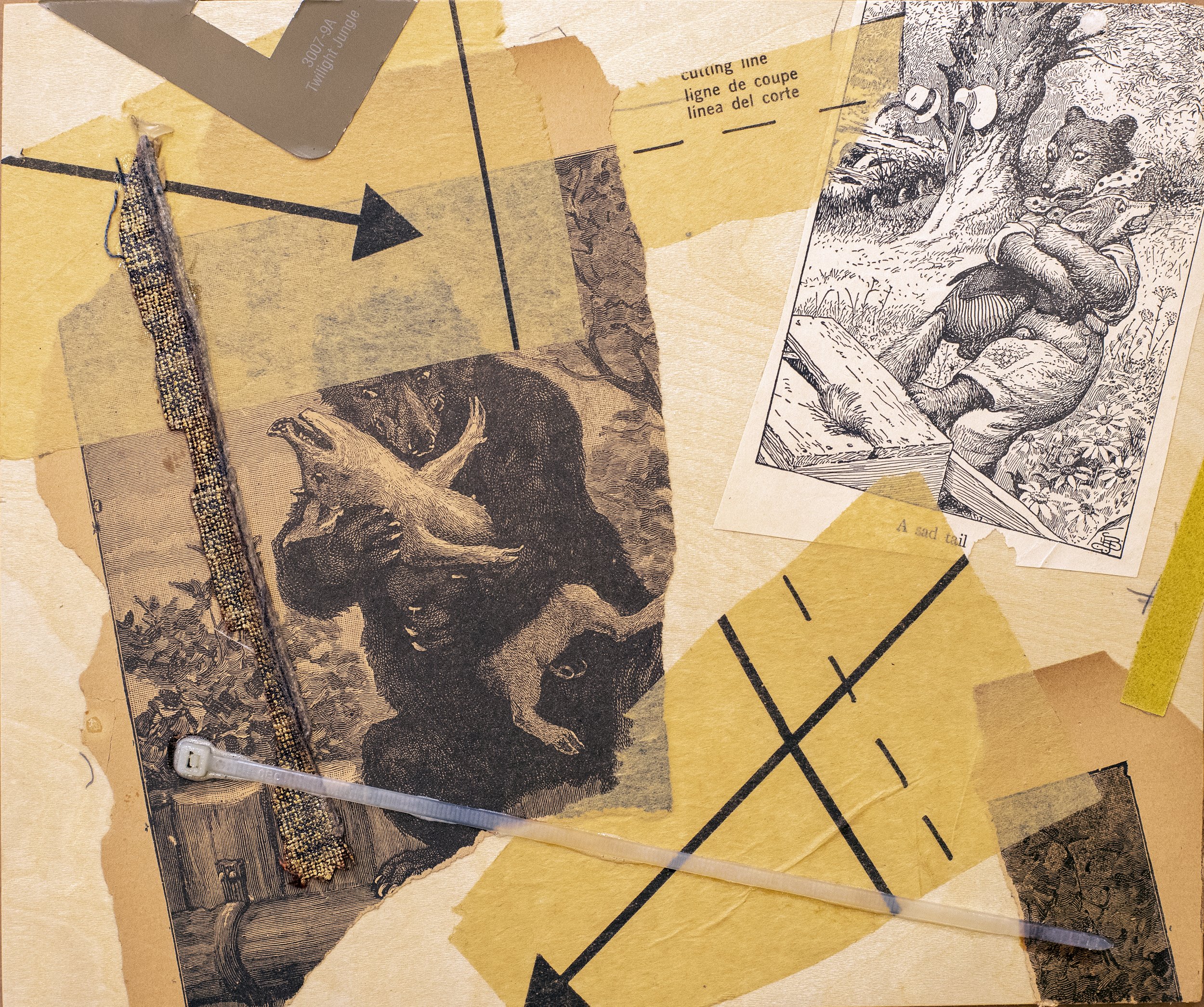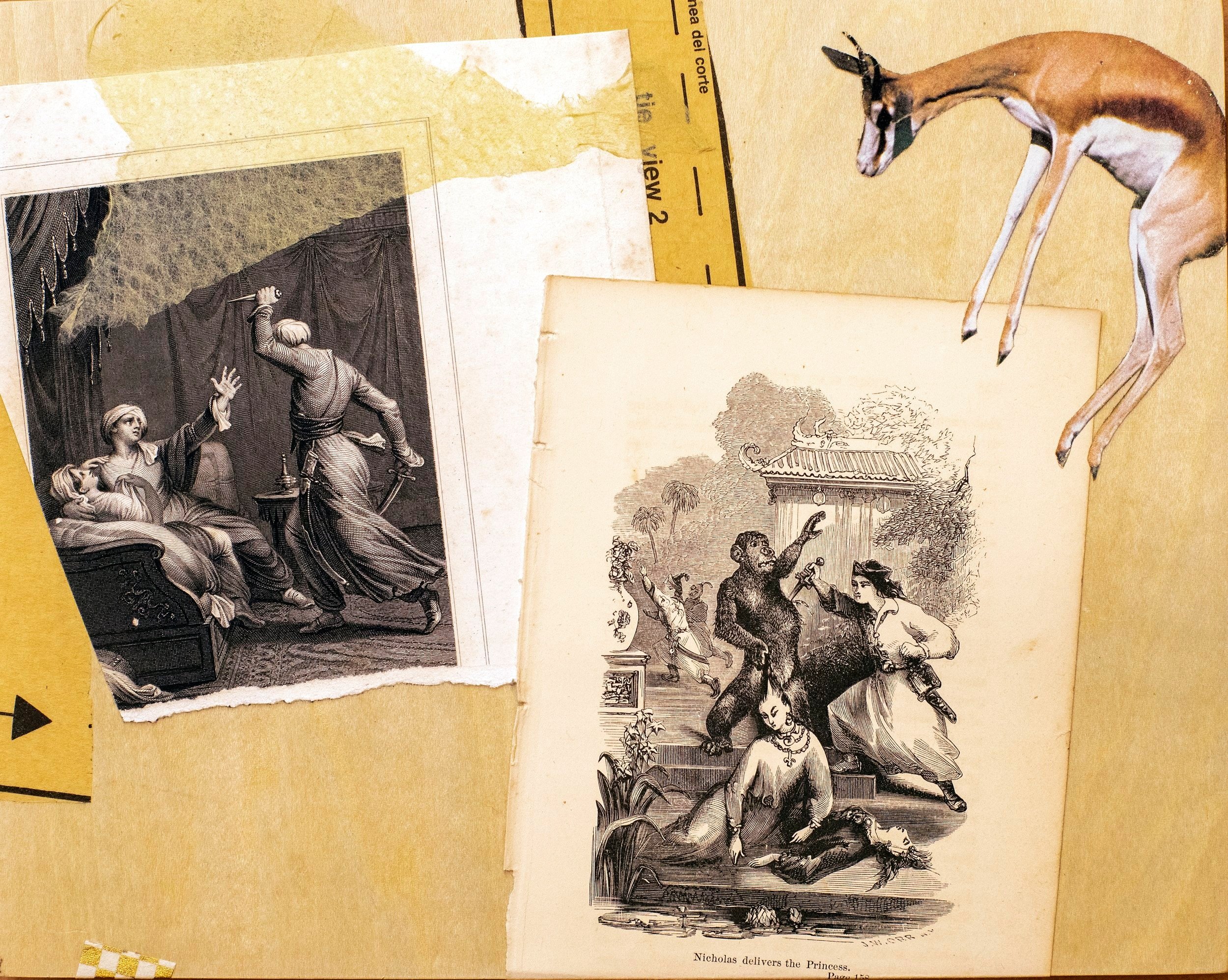Nine Apophanies
A series of nine collages, various sizes, on wooden panels, each one juxtaposing one or more images containing visual echoes.
“Apophenia” means finding connections between unrelated things—patterns where none exist. Type I errors and false positives. Patternicity. Men in the moon, Madonnas in a piece of toast, Qanon absurdities. (Obviously it’s a condition shared by most collage artists.) Nabokov has a short story about this; here’s an excerpt:
“Referential mania,” the article had called it. In these very rare cases, the patient imagines that everything happening around him is a veiled reference to his personality and existence. He excludes real people from the conspiracy, because he considers himself to be so much more intelligent than other men. Phenomenal nature shadows him wherever he goes. Clouds in the staring sky transmit to each other, by means of slow signs, incredibly detailed information regarding him. His in-most thoughts are discussed at nightfall, in manual alphabet, by darkly gesticulating trees. Pebbles or stains or sun flecks form patterns representing, in some awful way, messages that he must intercept. Everything is a cipher and of everything he is the theme. — from “Symbols and Signs” by Vladimir Nabokov, The New Yorker, May 7, 1948

"And so to dream"

"Gather"

"The Type of Humans We May Expect in a Few Centuries"

"Attache"

"Ancient and Modern Man"

"A Sad Tail"

"Lady Patient Being Treated Reclining on a Lounge"

"Nicholas Delivers the Princess"

"Jusqu'au soir!"